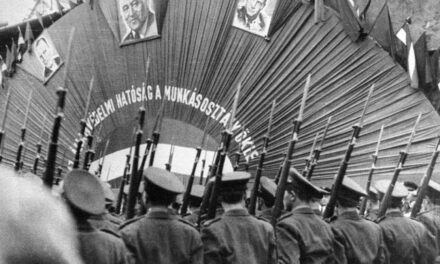Could Prince Gyula have been the hitherto unknown leader of the Hungarians left in the east? The source analyzes by János B. Szabó and Balázs Sudár, historians of the Budapest History Museum, led to surprising results. It seems that the history of the conquest so far needs to be reconsidered.
– The latest, Dentumoger II. in their study published in the volume, they claim nothing less than that one of the groups of sources that is usually associated with the early Hungarians is not actually about the conquerors. How is it possible?
– S. B: To answer this question, we have to start from a further point. During the analysis of the Muslim sources concerning the Hungarians, we came across very significant chronological problems, which fundamentally called into question the previous theories about early Hungarian history.
- Such as?
– S. B: Among other things, the much mentioned dual principality issue. This is informed by a single Muslim textual tradition, which has survived in many different versions, and which goes back to the now lost work of the Samanid minister al-Jayhani Among these texts, one of them, Ibn Rusta's , was the first to come to the fore, and then a – in our opinion, unconvincing – interpretation of it became dominant in Hungarian research 120-130 years ago. The theory of the dual principality and then the sacral kingdom was then based on this.
"Do you think it couldn't have happened that way?"
– NO. B. J: In our opinion, no. At the end of the 19th century, researchers knew very little about the Hungarians and the steppe world itself. Several sources have survived about the Khazars, which is why they tried to link Hungarianness and the state organization to them.
- It was tempting to transfer the Khazar parallel to the Hungarians, but in our view, it was this preconception that led Hungarian prehistory research to a dead end.
– S. B: In addition, in another source, the Byzantine work entitled " Government of the Empire" And this is quite similar to the name "Jzlh" (ie Gyula ) read in Ibn Rusta. That is why they thought that the word in the Arabic source was actually a dignified name. In this way, two dignified names, the kende and the gyula, were placed next to each other in the text, which in turn resulted in the dual rule system. However, in our opinion, this logic is unfounded.
"Why do they think that?"
– S.B: For several reasons. The wording of the primary Arabic text is really a bit vague. Not only late Hungarian researchers, but also a medieval Persian translator saw a dual system of rule. The users of the text writing in Arabic, on the other hand, usually wrote about a single Hungarian ruler, as did the later translators. On the other hand, searching for the word gyula, we found that it is not known anywhere to use it as a dignified name, but it definitely exists as a proper name: here and among the Pechenegs.
Therefore, we see that Ibn Rusta's text actually commemorates a Hungarian kende, i.e. prince, named Gyula.
The full article from Vasarnap.hu can be read here.
Author and image: Gábor Tóth
In the picture: János B. Szabó and Balázs Sudár are historians of the Budapest History Museum












